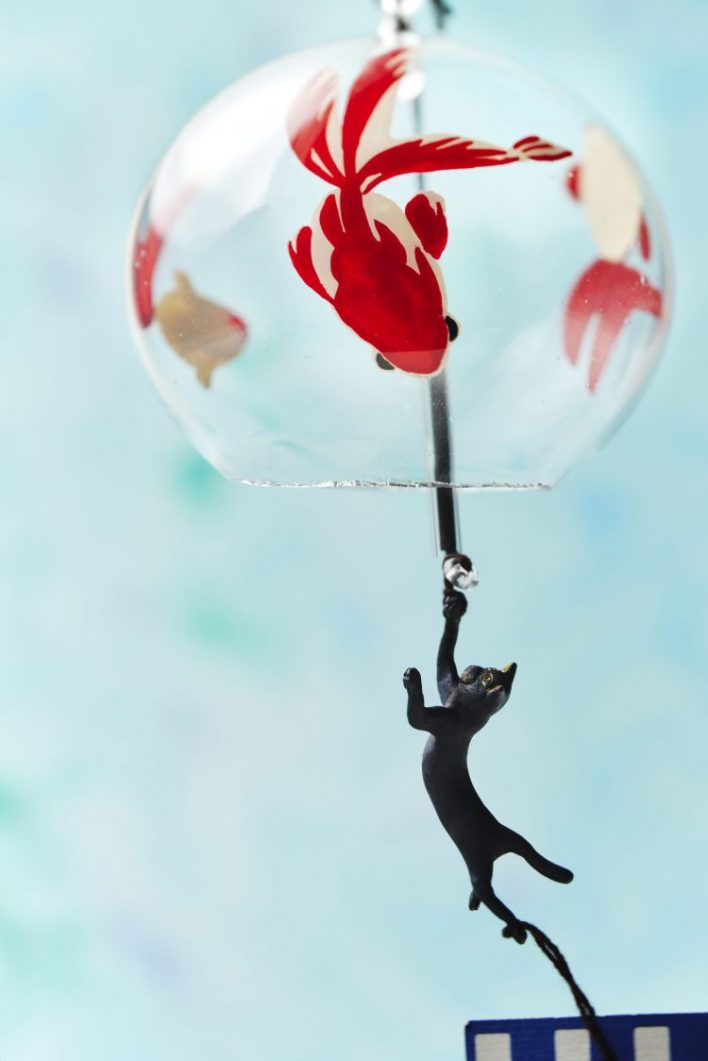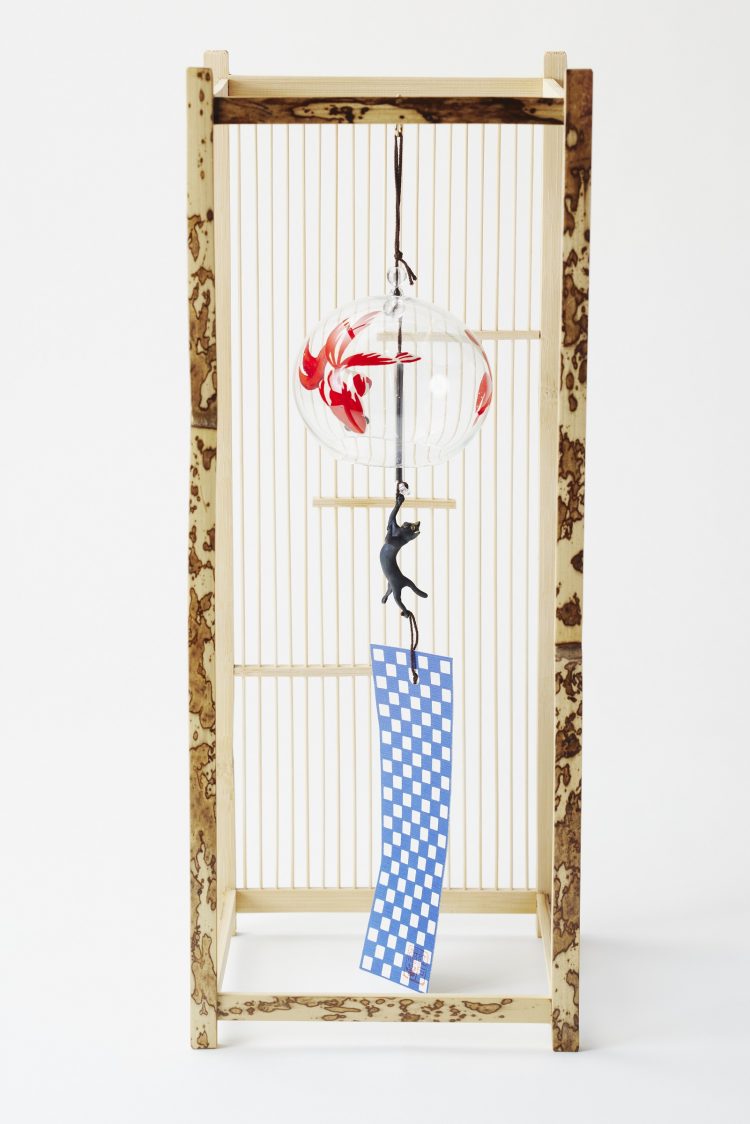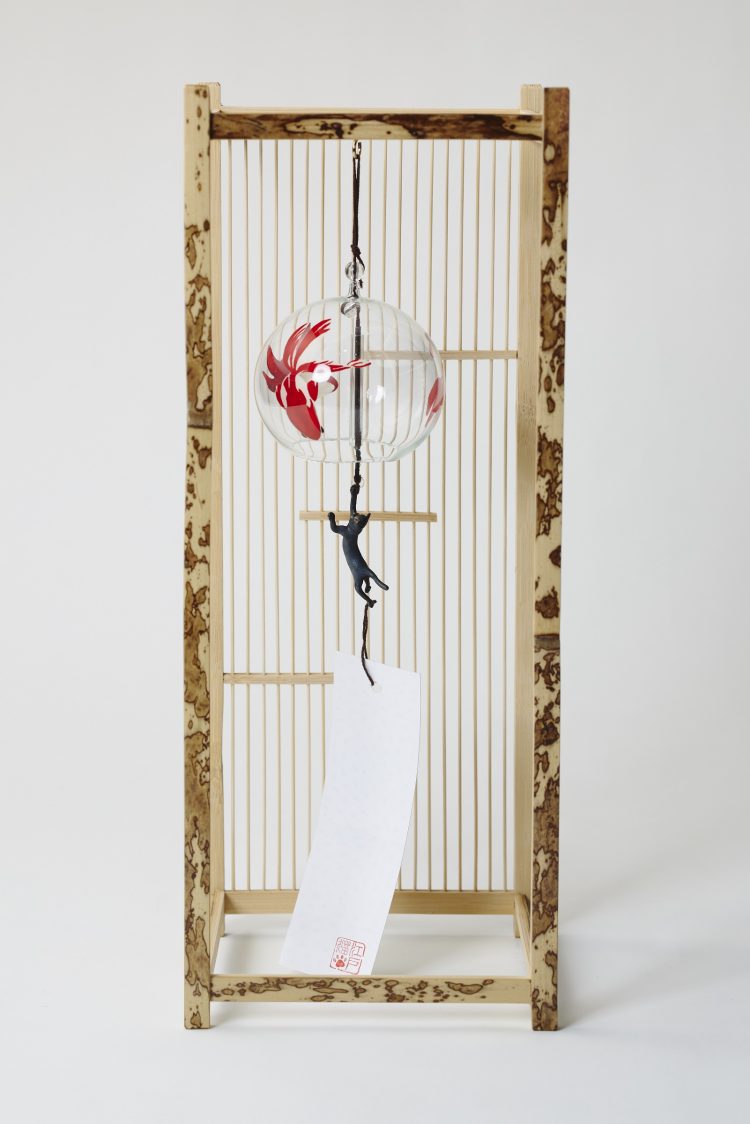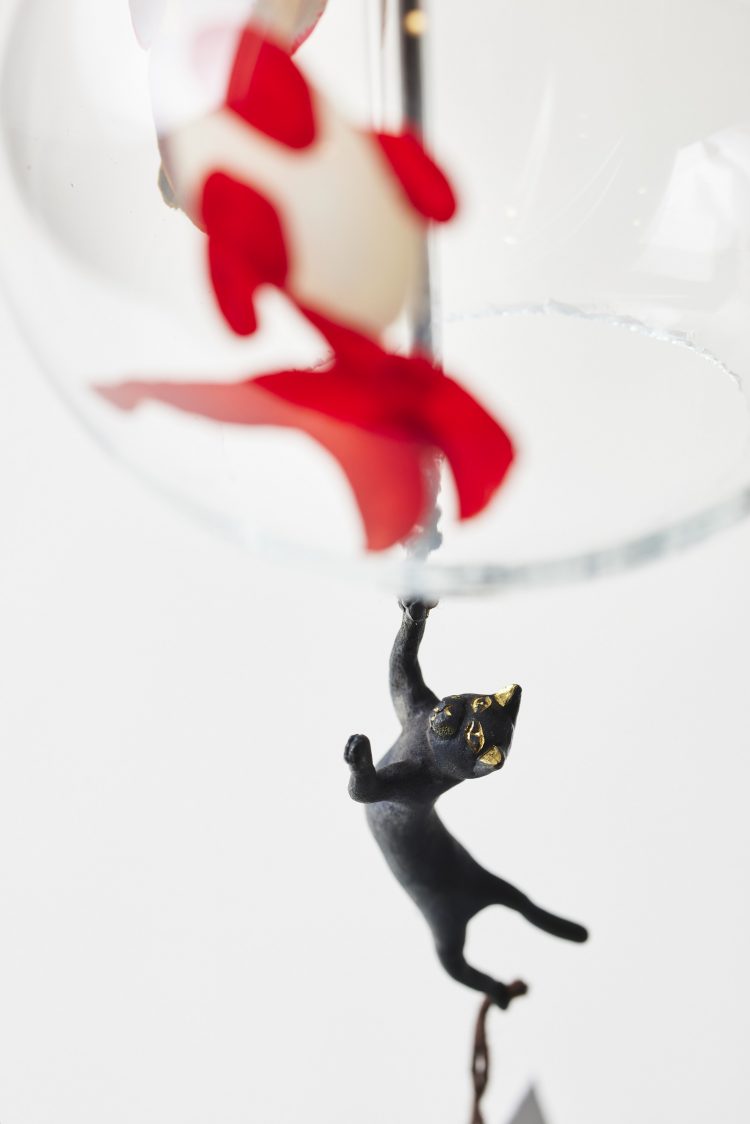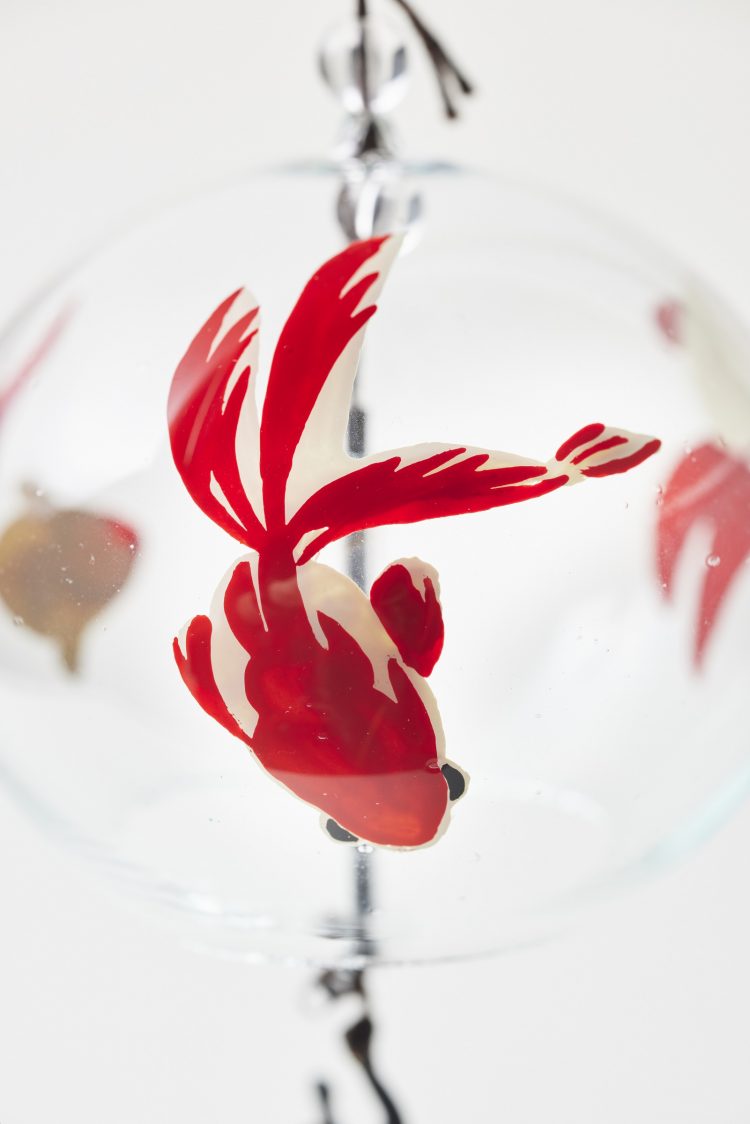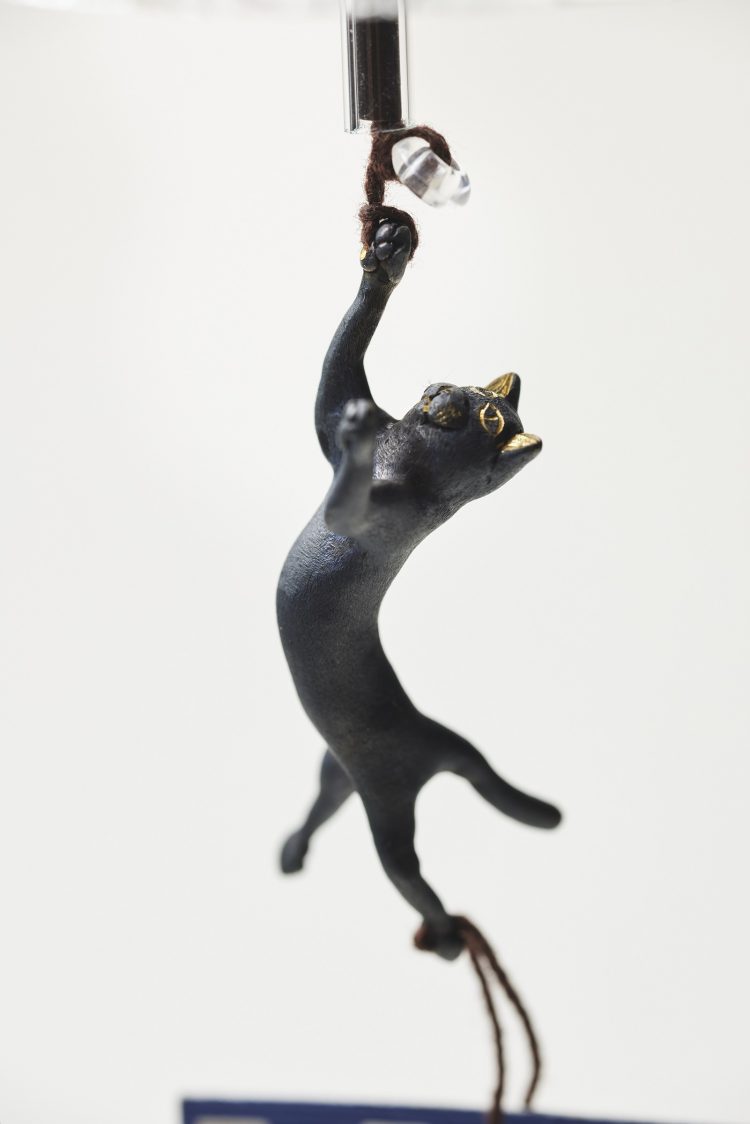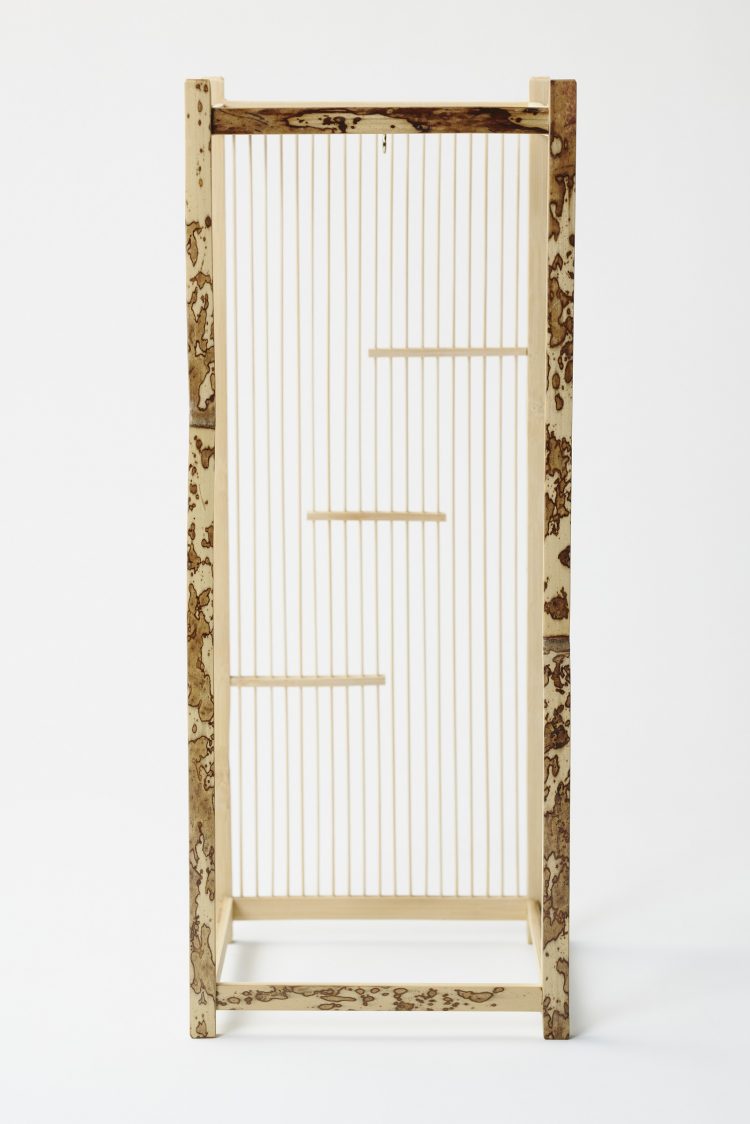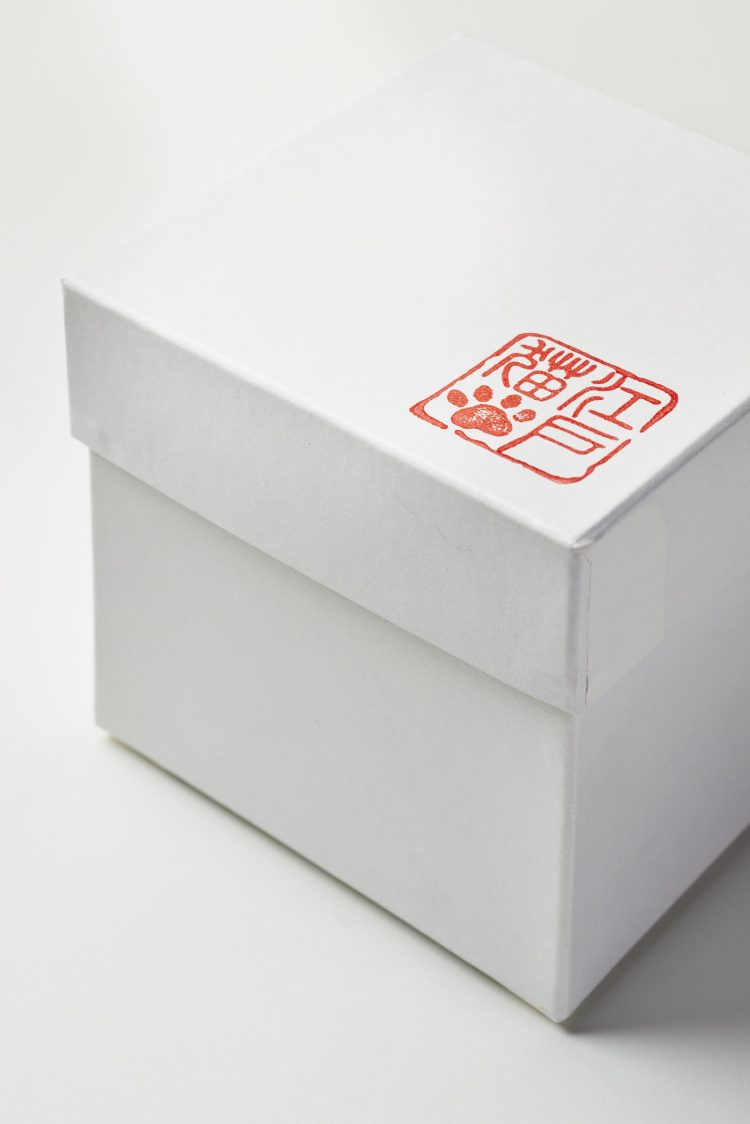EDO CAT Wind Chime
28 Tokyo Chokin (Metal Chasing)“Molding moving things is difficult,”
murmurs the craftsman intent on producing a black cat.
The first difficulty is converting a flat surface
into a three-dimensional object.
Creating a 3-D object out of a picture is an extremely difficult task,
so much so that figurine making is its own craft.
A number of sculptors approached on the matter refused the job
due to never having created a realistic cat before,
and so after a long period of trial and error,
he single-handedly finished the craft.
Deciding on the size was also hard work.
The first cat was too heavy and prevented the clapper
in the wind chime from moving.
Different sizes were then made and tried,
and finally with the fourth prototype, he arrived at the right size.
Deciding on the shape also caused big problems.
The basic shape must be recognized as a cat
by one-hundred people out of one-hundred people.
The outstretched front paw on the right must be
in perfect alignment with the back paw
on the left to ensure stability when it is suspended.
In order to obtain a sense of lively movement,
it is necessary to adjust the balance while creating the shape,
right through to the twisting body, the orientation of the tail,
the shape of the rear and the degree of muscling.
The processes involved in determining the perfect balance
were extremely arduous.
The detailed craftsmanship also comes with its own difficulties
due to the complexity of the shape.
Based on suggestions provided by a designer
who thought that the cheeks should be full,
fine chisels 0.1mm and 0.6mm in size were
used to create the right expression.
However, the front paws blocked access,
so the correct angle for carving was not possible.
When compared against rings and other articles
with a simple curving surface,
the level of carving difficulty increases exponentially depending
on the curves and twists included on three-dimensional objects.
Even the pads on the cat’s paws are clearly defined.
The work does not permit any corner-cutting,
and even traditional craftsmen are astonished
that we are this detailed.
The final finishing process also comes
with difficulties inherent with producing black cats.
Chemicals are used to thoroughly polish the gold cats,
and they are then carefully washed and dried.
The dye will not take if there is any of the chemical left,
which would produce a tabby cat.
The process of submerging the cats in a liquid
that turns the brass black is repeated three times.
Carving the face of the blackened cats
produces the sharp golden eyes.
However, this task is extremely risky as a slight slip of the hand
will expose more of the original metal than necessary,
making the end product worthless.
Not even a mistake the size of a single strand of fur can be made.
On the other side of multiple days of deep concentration,
a black cat stalking a goldfish is brought into creation.
- EDO CAT Wind Chime
- Materials: Glass, Brass, Paper, etc.
Size: W160mm × D150mm × H390mm
Types: Long strip of paper in checkered pattern or white
*The information on this site is as of May 2024.
*Sizes, colours and shapes of the actual products may differ slightly as they are
handmade.
*Product specifications and suggested retail prices may change without prior notice.

